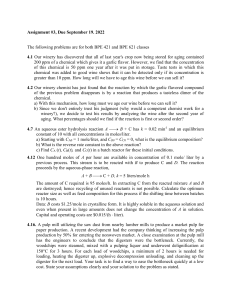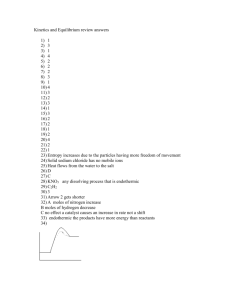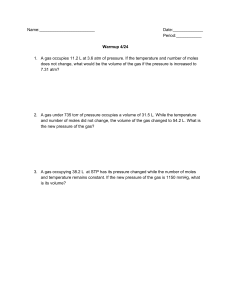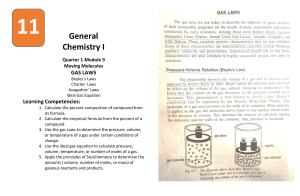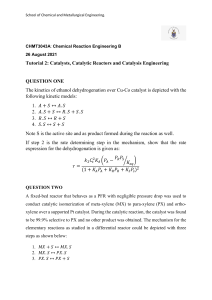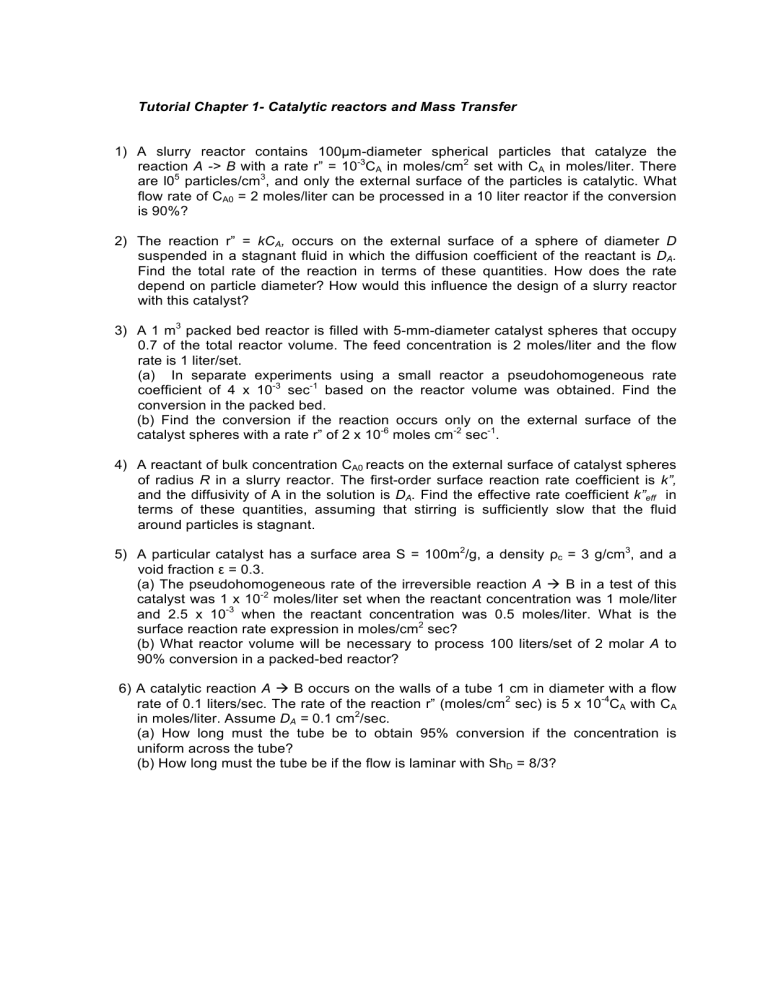
Tutorial Chapter 1- Catalytic reactors and Mass Transfer 1) A slurry reactor contains 100µm-diameter spherical particles that catalyze the reaction A -> B with a rate r” = 10-3CA in moles/cm2 set with CA in moles/liter. There are l05 particles/cm3, and only the external surface of the particles is catalytic. What flow rate of CA0 = 2 moles/liter can be processed in a 10 liter reactor if the conversion is 90%? 2) The reaction r” = kCA, occurs on the external surface of a sphere of diameter D suspended in a stagnant fluid in which the diffusion coefficient of the reactant is DA. Find the total rate of the reaction in terms of these quantities. How does the rate depend on particle diameter? How would this influence the design of a slurry reactor with this catalyst? 3) A 1 m3 packed bed reactor is filled with 5-mm-diameter catalyst spheres that occupy 0.7 of the total reactor volume. The feed concentration is 2 moles/liter and the flow rate is 1 liter/set. (a) In separate experiments using a small reactor a pseudohomogeneous rate coefficient of 4 x 10-3 sec-1 based on the reactor volume was obtained. Find the conversion in the packed bed. (b) Find the conversion if the reaction occurs only on the external surface of the catalyst spheres with a rate r” of 2 x 10-6 moles cm-2 sec-1. 4) A reactant of bulk concentration CA0 reacts on the external surface of catalyst spheres of radius R in a slurry reactor. The first-order surface reaction rate coefficient is k”, and the diffusivity of A in the solution is DA. Find the effective rate coefficient k”eff in terms of these quantities, assuming that stirring is sufficiently slow that the fluid around particles is stagnant. 5) A particular catalyst has a surface area S = 100m2/g, a density ρc = 3 g/cm3, and a void fraction ε = 0.3. (a) The pseudohomogeneous rate of the irreversible reaction A à B in a test of this catalyst was 1 x 10-2 moles/liter set when the reactant concentration was 1 mole/liter and 2.5 x 10-3 when the reactant concentration was 0.5 moles/liter. What is the surface reaction rate expression in moles/cm2 sec? (b) What reactor volume will be necessary to process 100 liters/set of 2 molar A to 90% conversion in a packed-bed reactor? 6) A catalytic reaction A à B occurs on the walls of a tube 1 cm in diameter with a flow rate of 0.1 liters/sec. The rate of the reaction r” (moles/cm2 sec) is 5 x 10-4CA with CA in moles/liter. Assume DA = 0.1 cm2/sec. (a) How long must the tube be to obtain 95% conversion if the concentration is uniform across the tube? (b) How long must the tube be if the flow is laminar with ShD = 8/3?
